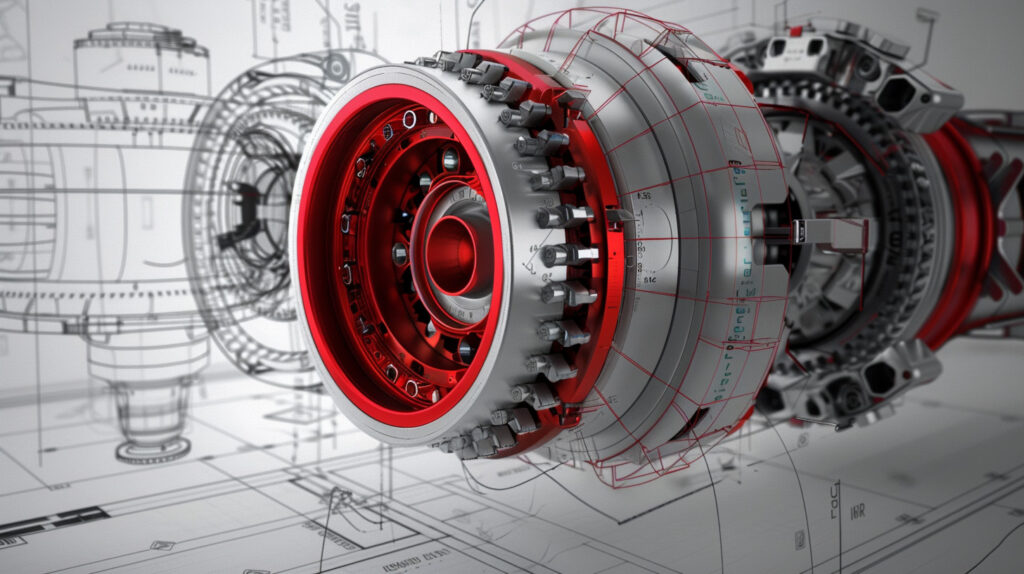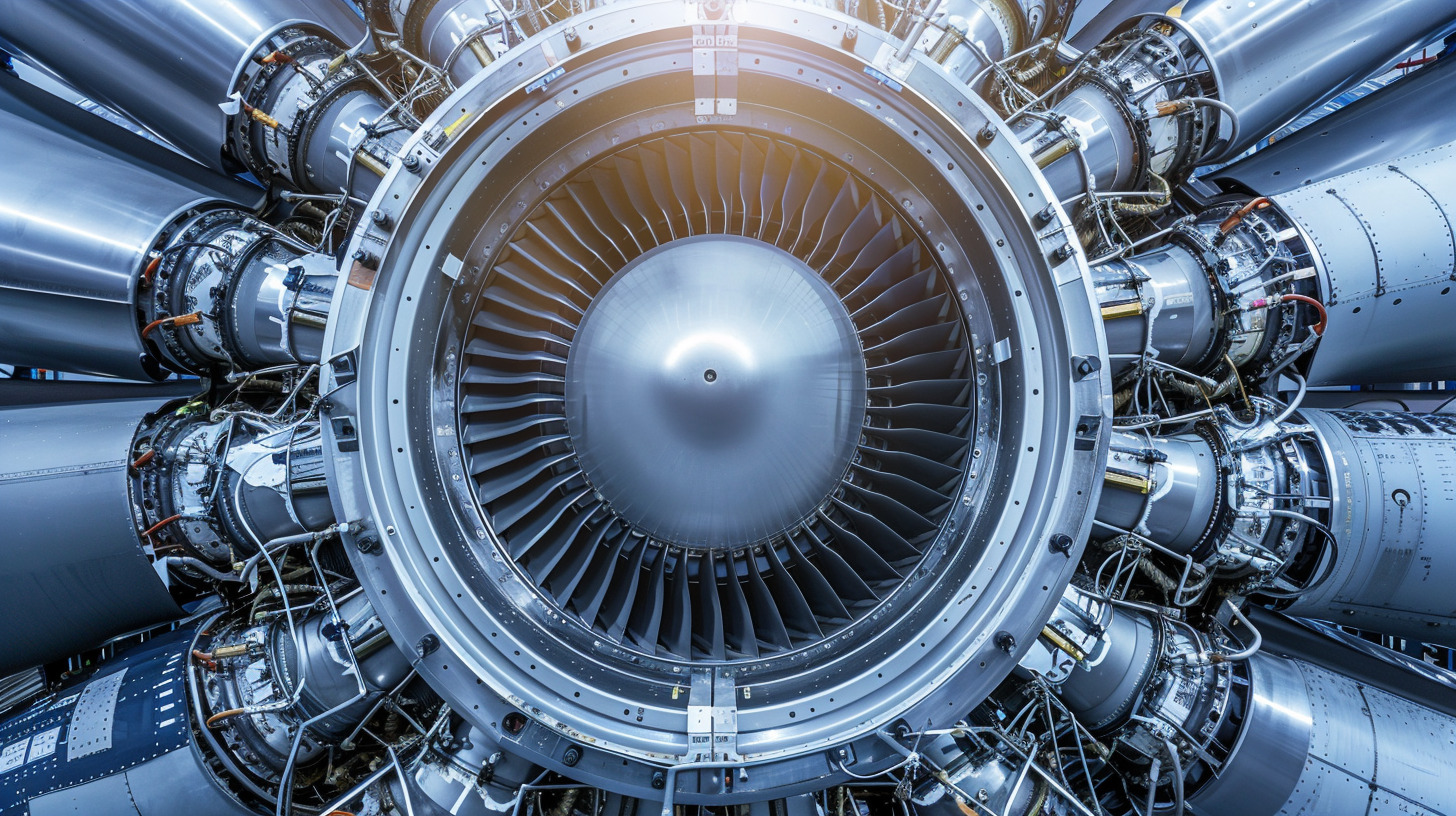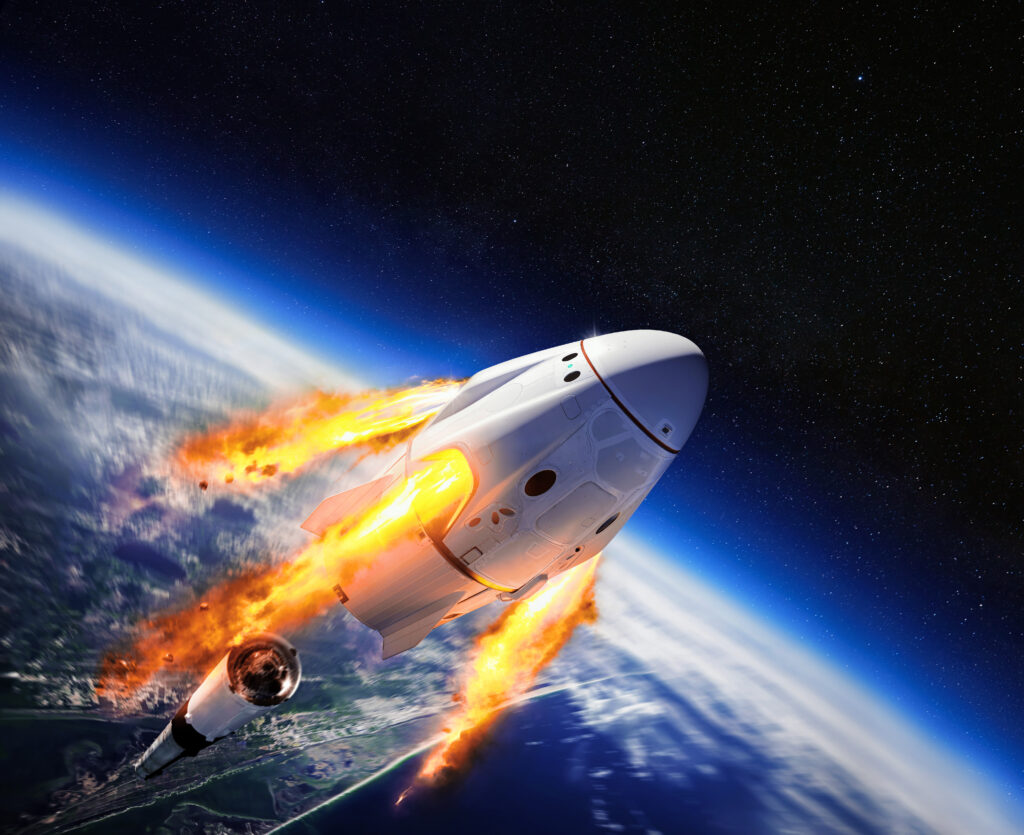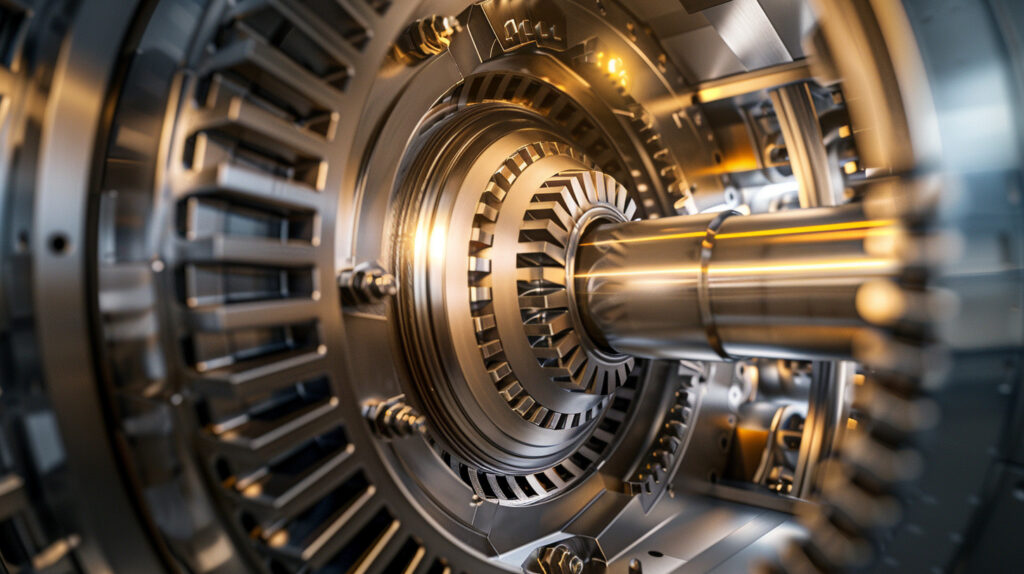Spring energized seals are a specialized type of seal designed to handle extreme conditions where conventional elastomeric seals often fail. They are constructed using a combination of high-performance polymers, such as PTFE, and a metal spring that provides continuous elastic force, ensuring a reliable seal even under varying pressures and temperatures. The unique design of these seals allows them to maintain their sealing capabilities over a wide range of conditions, making them ideal for applications in industries such as aerospace, automotive, and oil and gas.
Importance in High-Performance Applications
In high-performance applications, the reliability of seals is crucial. Traditional seals made from rubber or other elastomers can degrade over time due to factors like chemical exposure, heat, and wear, leading to leaks and system failures. Spring energized seals, however, are designed to overcome these challenges. The integration of a metal spring into the seal structure provides a constant force that keeps the seal tight against the mating surfaces, even as the material wears or the system experiences temperature fluctuations. This makes them indispensable in critical applications where failure is not an option.
Overview of Advanced EMC Technologies’ Product Range
Advanced EMC Technologies offers one of the most comprehensive selections of spring energized seals available today. Their products are designed and manufactured using a wide range of high-performance polymers, each selected for its specific properties that cater to the needs of different industries. Whether it’s for cryogenic temperatures, high-pressure environments, or chemical resistance, Advanced EMC Technologies has a seal that fits the bill. Their offerings include different types of springs, such as cantilever beam, slantcoil, and helical springs, each tailored to optimize the seal’s performance in various applications.
The Ultimate Guide to PTFE Sheets: Unleashing the Power of the Most Versatile Material on the Planet
Unique Features of Spring Energized Seals
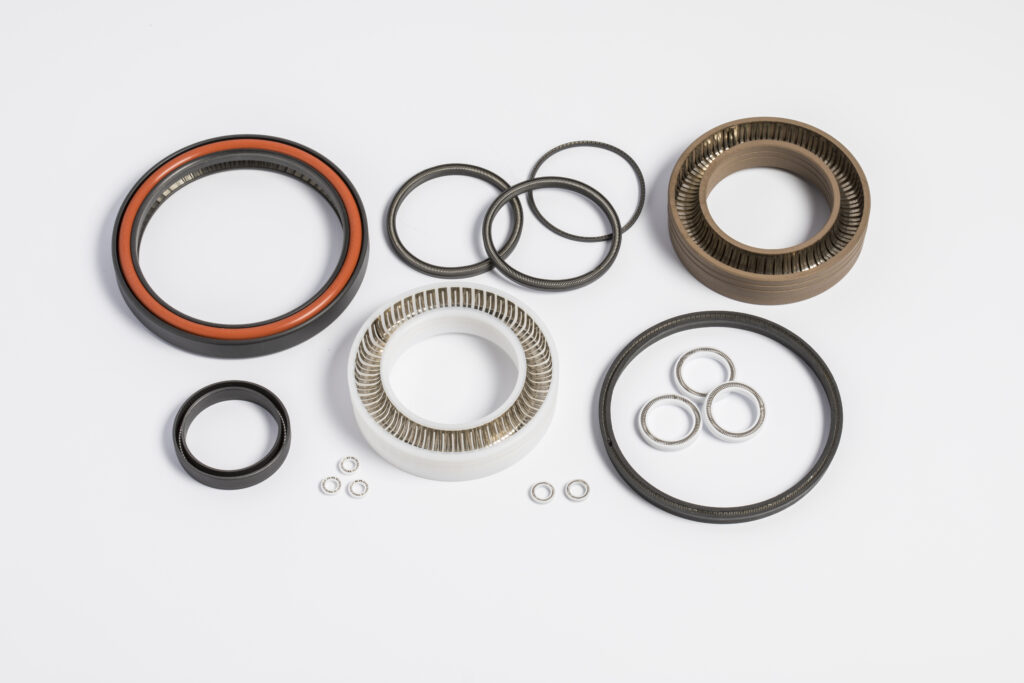
Material Composition: High-Performance Polymers and Stainless Steel
The foundation of Advanced EMC Technologies‘ spring energized seals lies in their material composition. These seals are made from high-performance polymers like PTFE (Polytetrafluoroethylene), known for its excellent chemical resistance, low friction, and wide temperature range. To enhance the seal’s resilience and functionality, a stainless steel spring, typically made from 300-series stainless steel or Hastelloy for corrosive environments, is integrated into the seal. This combination ensures the seals can withstand harsh conditions without compromising performance.
Spring Design and Functionality
The springs used in these seals are not just standard components; they are carefully engineered to provide the necessary force to maintain a tight seal. Advanced EMC Technologies utilizes three primary types of springs: cantilever beam, slantcoil, and helical. Each spring type offers unique load and deflection properties, making them suitable for different applications. For instance, cantilever beam springs provide moderate load and deflection, making them versatile for general-purpose applications. On the other hand, slantcoil springs offer a wide deflection range with a relatively constant load, ideal for applications requiring precise control over friction and torque.

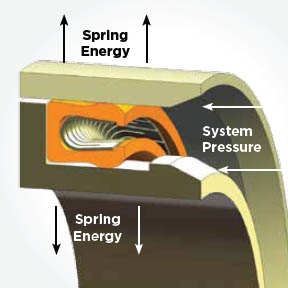
Customization Options for Specific Applications
One of the standout features of Advanced EMC Technologies‘ seals is the ability to customize them according to specific application requirements. Depending on the operational environment—whether it’s high pressure, extreme temperatures, or exposure to aggressive chemicals—the seals can be tailored in terms of material, spring design, and load characteristics. This customization ensures that each seal performs optimally in its intended application, providing maximum efficiency and longevity.
Advanced EMC Technologies: Revolutionizing Sealing Solutions Across Industries
Advantages of Spring Energized Seals
Low Friction and Wide Temperature Range
One of the key advantages of spring energized seals is their ability to operate efficiently across a wide temperature range. The use of PTFE and other advanced polymers ensures that these seals can function in environments as cold as -320°F to as hot as 575°F. Additionally, the low friction properties of these materials reduce wear and energy loss, making them suitable for dynamic applications where movement and sealing are required simultaneously.
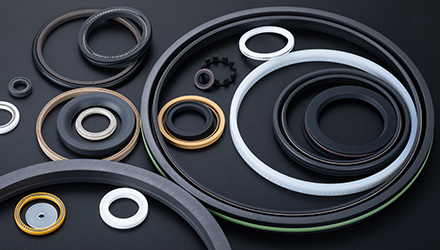
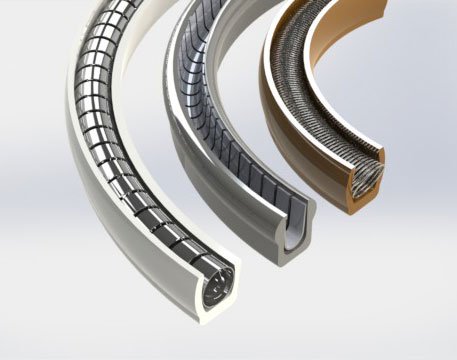
Enhanced Durability and Longevity
Compared to traditional seals, spring energized seals offer significantly enhanced durability. The combination of robust materials and the continuous force provided by the spring means these seals can endure longer periods of operation without degrading. This longevity is particularly beneficial in applications where maintenance is difficult or where equipment downtime is costly. By choosing spring energized seals, industries can ensure longer service intervals and reduced maintenance costs.
Chemical Compatibility and Resistance
The advanced polymers used in these seals are selected for their chemical resistance, making them suitable for use in environments where they might be exposed to aggressive chemicals, solvents, or gases. PTFE, for instance, is known for its inertness and ability to resist most chemicals, making it a preferred choice in industries like chemical processing, pharmaceuticals, and oil and gas. This chemical compatibility extends the life of the seals and ensures consistent performance even in challenging conditions.
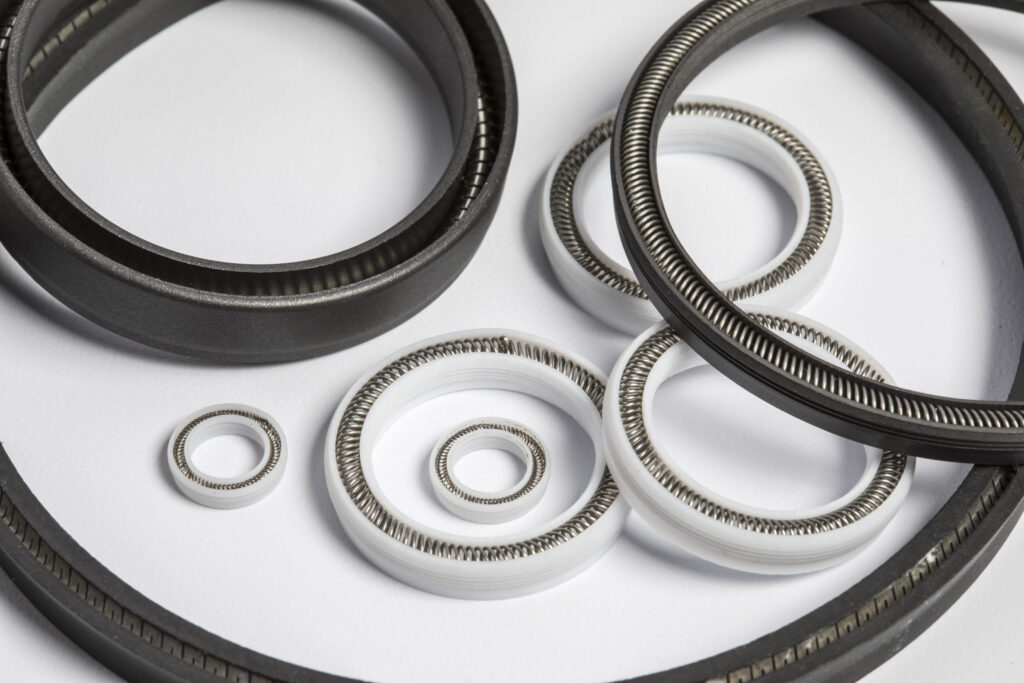
Types of Spring Energized Seals Offered by Advanced EMC
Cantilever Beam Spring
The cantilever beam spring is one of the most versatile spring designs from Advanced EMC Technologies. It provides a moderate load and deflection range, making it suitable for a wide array of applications. This type of spring is particularly effective for dynamic applications where positive wiping action at the front edge of the seal lip is needed. The cantilever beam spring design is available in both standard and heavy load variations, allowing for customization based on the specific requirements of the application.
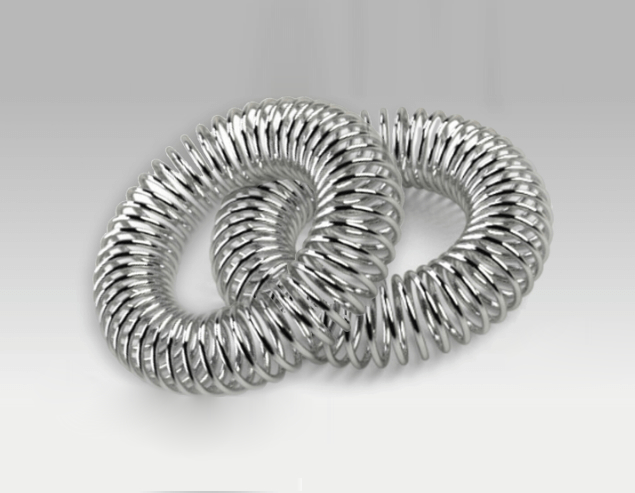
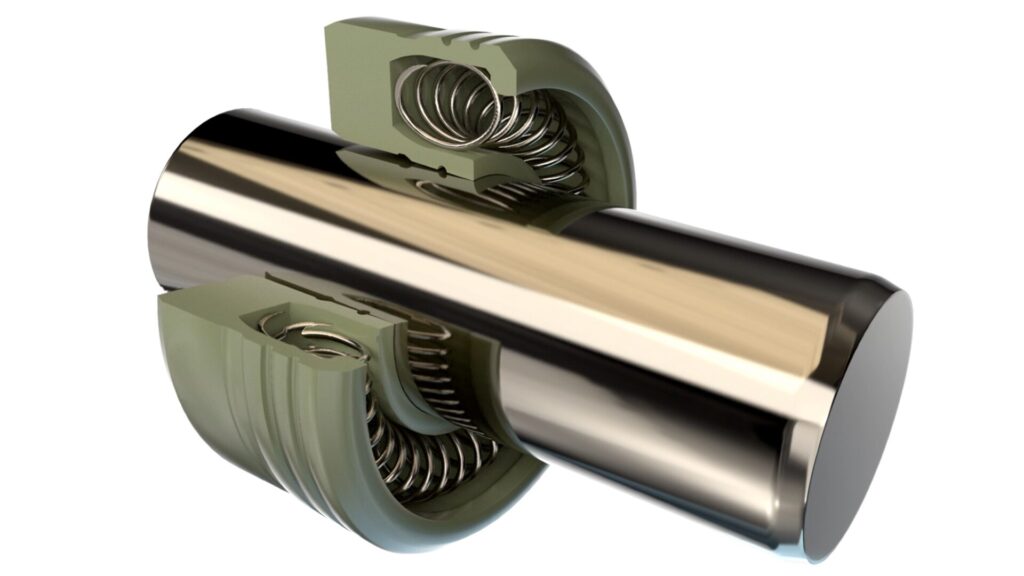
Slantcoil Spring
The slantcoil spring is another popular option, known for its wide deflection range and relatively constant load throughout the life of the seal. This spring type is ideal for applications requiring close control of friction or torque, such as in precision instruments or sensitive mechanical systems. The slantcoil spring is available in light, medium, and heavy loads, providing flexibility in meeting the performance needs of various industries.
Helical Spring
The helical spring is designed for applications where low deflection and very high unit load are required. This spring type is typically used in static or slow-dynamic service environments where friction and wear are less of a concern. The helical spring’s robust design makes it suitable for sealing applications under extreme pressure conditions, where maintaining a tight seal is critical.

Applications of Spring Energized Seals
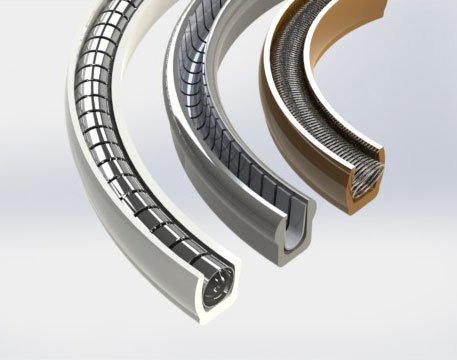
Static Service Applications
Spring energized seals are highly effective in static service applications where the seal remains stationary while the environment around it may change. These seals are commonly used in sealing flanges, valve bodies, and other static joints in systems that are exposed to high pressures or aggressive chemicals. Their ability to maintain a tight seal over a wide temperature range makes them an excellent choice for industries such as chemical processing and oil and gas, where reliability is paramount.
Reciprocating Service Applications
In reciprocating service applications, where the seal is exposed to back-and-forth motion, the durability and low friction of spring energized seals come into play. These seals are used in hydraulic and pneumatic cylinders, actuators, and pumps where they must withstand constant movement while maintaining sealing integrity. The combination of PTFE and spring technology reduces wear and friction, ensuring long service life even in demanding applications.

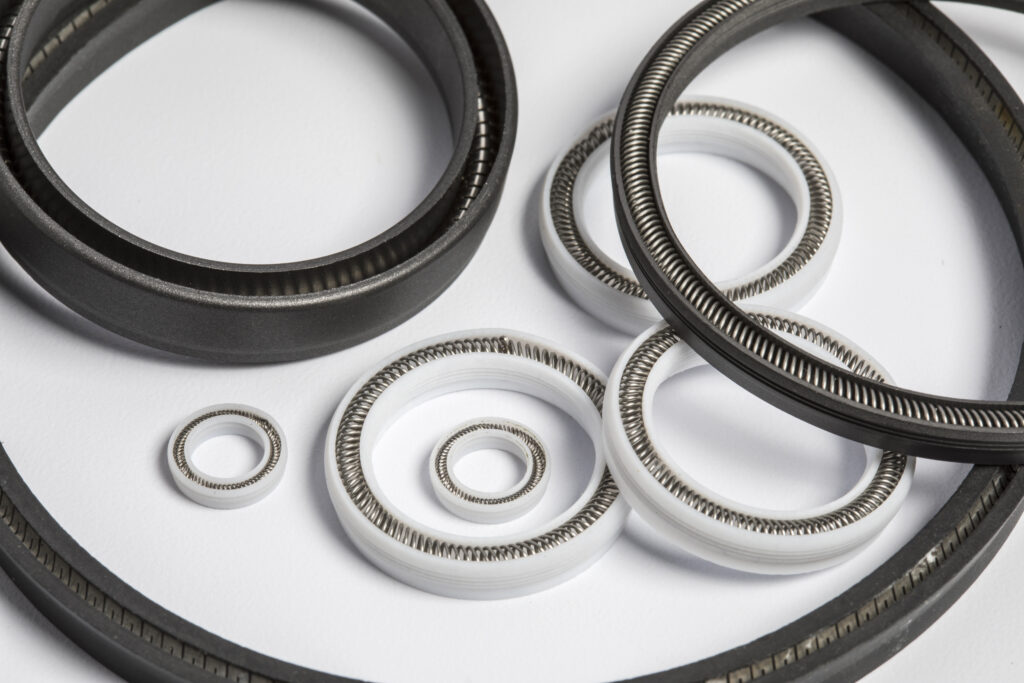
Rotary Service Applications
Rotary service applications present a unique set of challenges, as the seal must handle continuous rotational movement. Spring energized seals from Advanced EMC Technologies are well-suited for such applications, including use in rotary joints, pumps, and compressors. The low friction characteristics of the seals, combined with their ability to operate under high pressures and speeds, make them ideal for maintaining seal integrity in rotating equipment.
Seals in Space: The Unsung Heroes of Rocketry
Material Selection for Spring Energized Seals
PTFE and Fluorolon Blends
The primary material used in Advanced EMC Technologies’ spring energized seals is PTFE, which is renowned for its low friction, chemical resistance, and wide temperature tolerance. To further enhance the performance of their seals, Advanced EMC Technologies offers various Fluorolon blends, which are PTFE-based materials modified with additives such as graphite, carbon, or glass to improve wear resistance, strength, and other properties. These blends are tailored to meet the specific needs of different applications, whether it’s for handling high-pressure fluids, operating in dry conditions, or resisting abrasive wear.

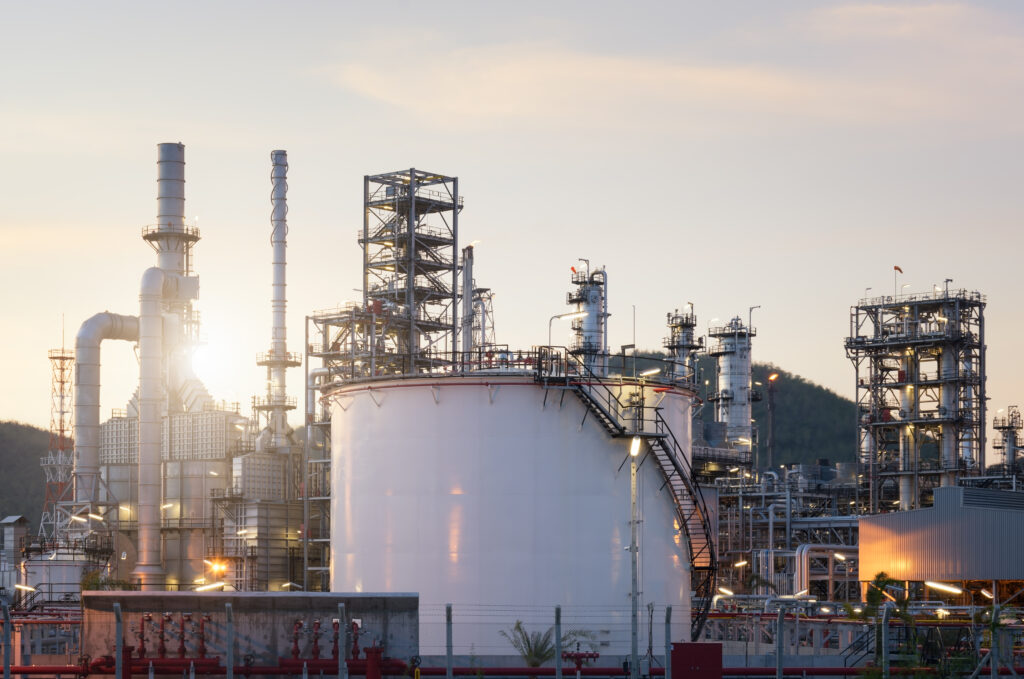
Corrosion and Radiation Resistance
In addition to their excellent chemical resistance, the materials used in these seals offer outstanding corrosion and radiation resistance. This makes them suitable for use in harsh environments, such as in nuclear applications or in the chemical industry, where exposure to corrosive substances or high levels of radiation is common. The use of materials like Hastelloy for the springs further enhances the seals’ ability to withstand corrosive environments, ensuring long-term reliability and safety.
FDA-Approved Options for Food Contact
For applications in the food and pharmaceutical industries, where contact with consumable products is inevitable, Advanced EMC Technologies offers FDA-approved PTFE materials. These materials meet the stringent requirements for safety and hygiene, ensuring that the seals do not contaminate the products they come into contact with. This makes them an excellent choice for sealing systems in food processing equipment, medical devices, and other applications where cleanliness and safety are critical.

Performance Characteristics
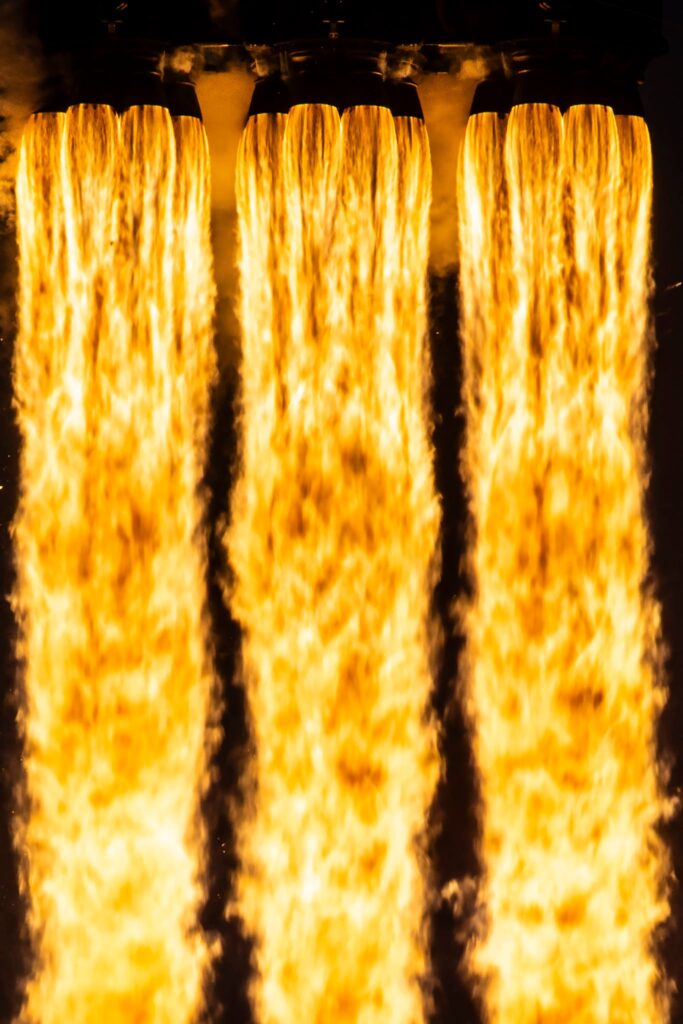
Pressure Ratings and Temperature Range
Spring energized seals from Advanced EMC Technologies are designed to perform under extreme conditions. They are capable of handling pressure ratings that range from 3,000 psi to as high as 30,000 psi, depending on the specific seal design and application. This makes them suitable for use in high-pressure hydraulic systems, oil and gas exploration, and aerospace applications. Additionally, these seals can operate across a broad temperature range, from cryogenic conditions as low as -320°F to high-temperature environments reaching up to 575°F. This wide operational range ensures that the seals maintain their integrity and performance in virtually any environment.
Abrasion Resistance and Wear Performance
One of the critical factors determining a seal’s longevity is its ability to resist wear and abrasion. Advanced EMC Technologies‘ spring energized seals are engineered to offer excellent wear resistance, even in harsh operating conditions. The use of reinforced PTFE blends, such as those containing carbon or glass fibers, enhances the seal’s ability to withstand continuous friction and contact with abrasive surfaces. This is particularly important in dynamic applications, such as in rotary or reciprocating equipment, where the seal is subjected to constant movement and potential wear.
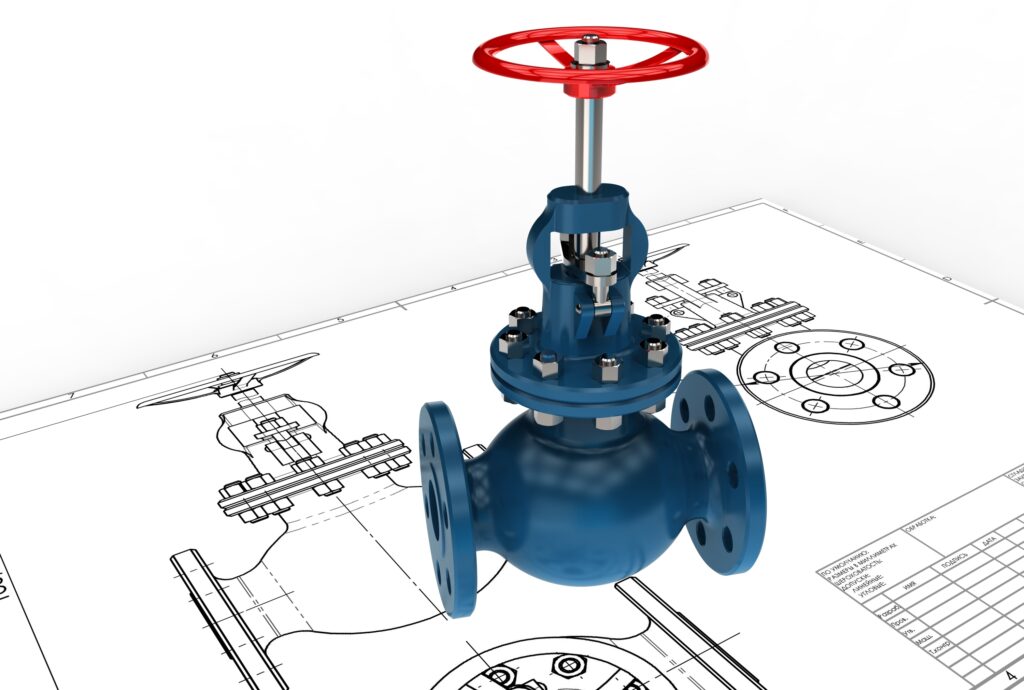
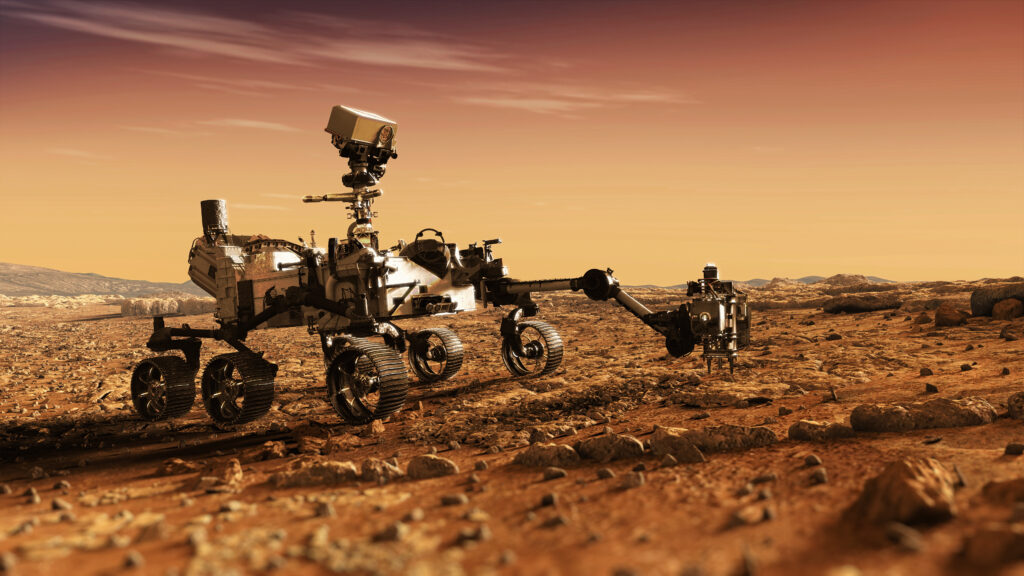
Sealing Capabilities in Extreme Conditions
The sealing performance of Advanced EMC Technologies‘ products is unmatched in extreme conditions, including environments with aggressive chemicals, high pressures, and extreme temperatures. The spring-energized design ensures that the seal remains tightly compressed against the mating surfaces, even as the material wears or deforms slightly over time. This ability to maintain a reliable seal under such conditions is critical in preventing leaks and ensuring the safe operation of equipment in industries like aerospace, chemical processing, and oil and gas.
Hardware Recommendations for Optimal Seal Performance

Surface Finish Requirements
For optimal performance of spring energized seals, the surface finish of the mating components is crucial. Advanced EMC Technologies recommends a fine surface finish to minimize wear and maximize the lifespan of the seal. For most applications, a surface roughness of 8 to 16 microinches (Ra) is suggested. A smoother finish reduces friction and heat generation, which can significantly extend the seal’s operational life. This is especially important in dynamic applications where the seal moves relative to the mating surface.

Mating Surface Hardness
The hardness of the mating surfaces plays a significant role in the performance and durability of the seals. Advanced EMC Technologies advises that mating surfaces should have a hardness of at least 44 Rockwell C (RC) for moderate speed and pressure conditions. For more demanding environments, where higher speeds or pressures are involved, a hardness of 65 to 72 RC may be necessary. This ensures that the mating surface can resist abrasion from the seal, which helps maintain the surface finish and prolongs both the seal and the component’s lifespan.

Recommended Shaft Coatings
In high-speed rotary or severe-service reciprocating applications, Advanced EMC Technologies suggests the use of specific shaft coatings to enhance the performance of their seals. Coatings such as chromium oxide or similar materials are recommended due to their high hardness and ability to maintain a smooth finish. These coatings help reduce friction and wear on both the seal and the shaft, ensuring reliable operation over extended periods. However, chrome plating should generally be avoided, or used only in light-duty applications, as it may not provide sufficient wear resistance in more demanding environments.
Comparing Spring Energized Seals with Traditional Sealing Solutions
Advantages Over Conventional Elastomeric Seals
Spring energized seals offer several advantages over traditional elastomeric seals. Elastomeric seals, while effective in many applications, often suffer from degradation due to factors such as heat, chemical exposure, and wear. Over time, they can harden, crack, or swell, leading to a loss of sealing integrity. In contrast, spring energized seals are made from high-performance polymers like PTFE, which are far more resistant to these types of degradation. The integrated spring provides a constant force that helps maintain the seal even as the material experiences wear or deformation, offering superior long-term performance.
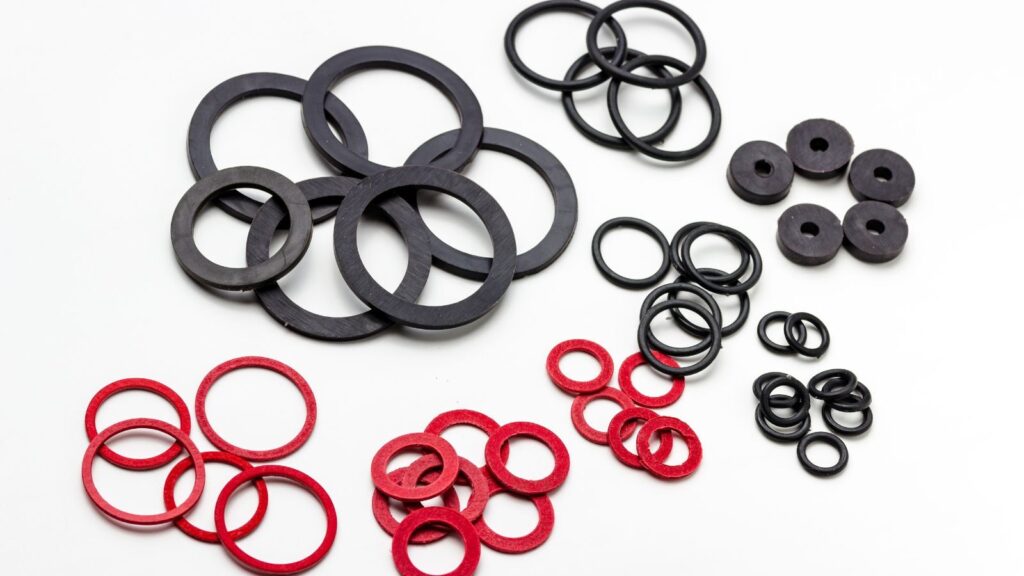

Performance in High-Pressure Environments
In high-pressure applications, traditional seals can often fail due to extrusion, where the seal material is forced out of its groove under pressure. Spring energized seals are designed to withstand such conditions. The combination of a durable polymer and a high-strength spring ensures that the seal remains in place, even under extreme pressures. This makes them particularly suitable for use in hydraulic systems, high-pressure gas seals, and other demanding applications where failure is not an option.
Long-Term Cost Efficiency
While spring energized seals may have a higher initial cost compared to conventional seals, their durability and long service life often cause lower overall costs. The reduced need for maintenance, combined with fewer occurrences of leaks and failures, translates to lower operational costs over time. Industries that rely on these seals benefit from increased equipment uptime and reduced downtime, making spring energized seals a cost-effective solution in the long run.
Installation and Maintenance Tips
Proper Installation Techniques
The performance and longevity of spring energized seals depend significantly on proper installation. To ensure a tight and reliable seal, it is crucial to follow precise installation procedures. Before installation, the sealing surface and seal itself should be thoroughly cleaned to remove any debris, dirt, or contaminants that could compromise the seal’s integrity. During installation, care should be taken to avoid twisting or stretching the seal, as this can lead to premature failure. It is also important to ensure that the seal is properly seated in its groove, with uniform compression around its circumference.
Maintenance Best Practices
Although spring energized seals are designed for durability and long service life, regular maintenance can help to extend their operational lifespan even further. Periodic inspections should be conducted to check for signs of wear, such as flattening of the seal’s lips or damage to the spring. In dynamic applications, it is also advisable to monitor the system’s operating conditions, such as temperature and pressure, to ensure they remain within the seal’s rated limits. Lubrication, where appropriate, can also help reduce wear and friction, contributing to the seal’s longevity.
Common Issues and Troubleshooting
Despite their robust design, spring energized seals can encounter issues if not properly installed or maintained. Common problems include leaks, which can be caused by improper installation, surface finish issues, or degradation of the seal material. If a leak occurs, it is important to inspect the seal and the mating surfaces for any signs of damage or wear. Another potential issue is the loss of spring force, which can occur if the spring becomes damaged or loses its elasticity over time. In such cases, replacing the seal and spring with a new unit is usually the best course of action.
Why PTFE Rotary Shaft Seals Are Essential for High-Performance Machinery
Case Studies: Real-World Applications
Success Stories from Various Industries
Advanced EMC Technologies‘ spring energized seals have been successfully implemented across a wide range of industries, providing reliable sealing solutions in some of the most challenging environments. For example, in the aerospace industry, these seals have been used in critical applications such as hydraulic actuators and fuel systems, where their ability to withstand extreme temperatures and pressures has proven invaluable. In the oil and gas sector, spring energized seals have been deployed in downhole tools and valves, where their durability and resistance to aggressive chemicals have helped prevent leaks and extend equipment life.
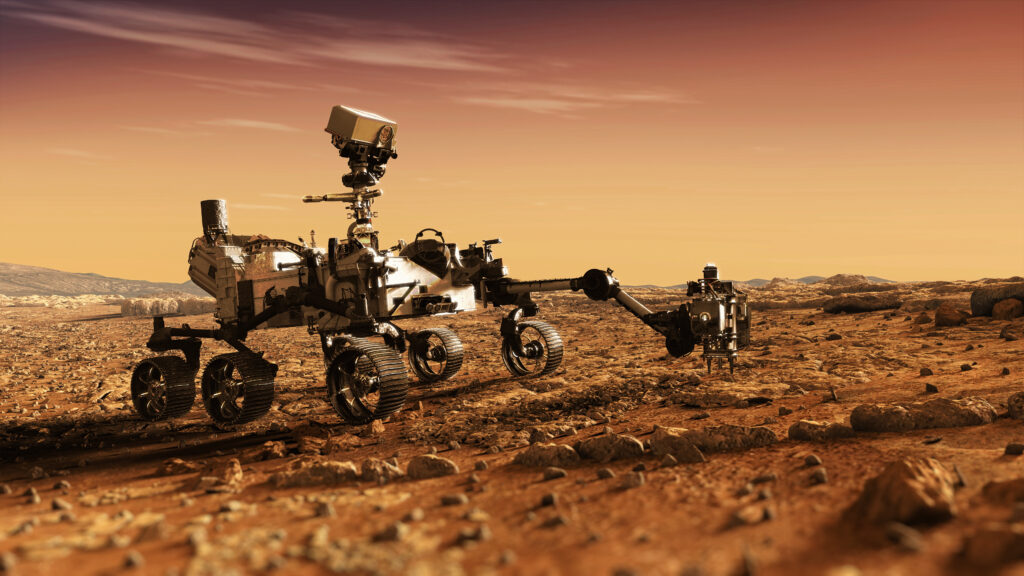
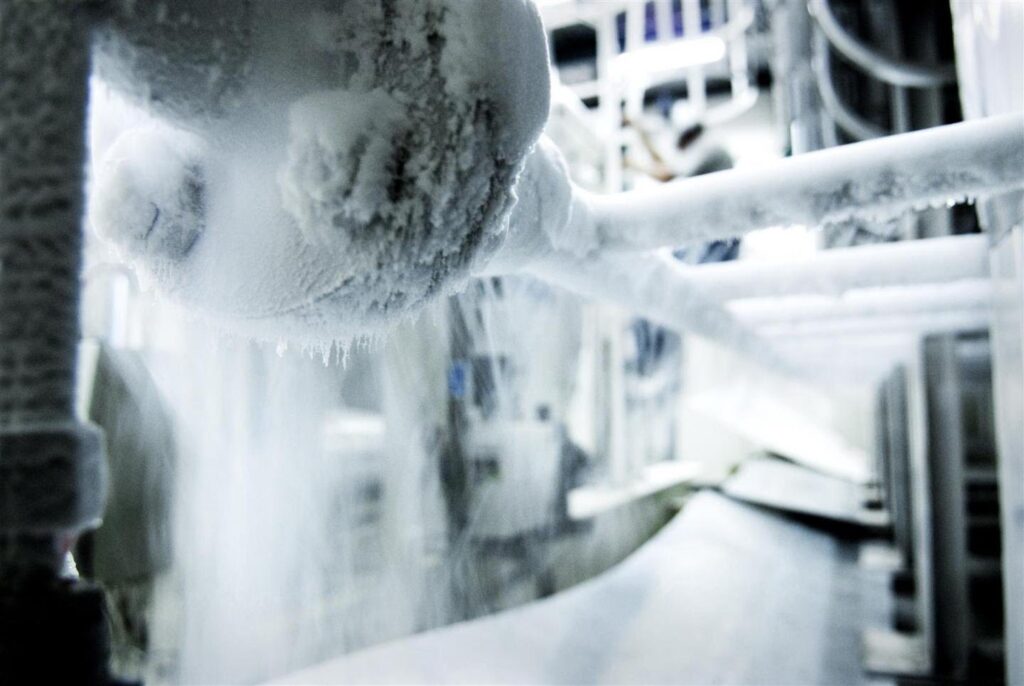
Performance in Extreme Environments
One notable case study involves the use of Advanced EMC Technologies‘ seals in cryogenic applications, where they are exposed to temperatures as low as -320°F. In these conditions, traditional seals would typically fail due to material brittleness and loss of elasticity. However, the combination of PTFE with a resilient spring allows these seals to maintain their performance, ensuring reliable operation in cryogenic pumps, valves, and other equipment used in the liquefied natural gas (LNG) industry.
Client Testimonials
Customers across various industries have reported significant improvements in equipment reliability and performance after switching to Advanced EMC Technologies‘ spring energized seals. Testimonials often highlight the seals’ longevity, low maintenance requirements, and ability to operate under extreme conditions as key benefits. These positive experiences underscore the value that these seals bring to high-performance applications, where reliability and durability are critical.
Future Trends in Spring Energized Seals

Innovations in Material Science
The future of spring energized seals is closely tied to advancements in material science. Researchers are continually developing new polymer blends and composites that offer improved performance characteristics, such as greater wear resistance, lower friction, and enhanced chemical compatibility. These innovations are expected to expand the range of applications for spring energized seals, making them even more versatile and reliable in extreme conditions. Additionally, developments in additive manufacturing and 3D printing may allow for more customized and complex seal designs, further enhancing their performance.

Emerging Applications in New Industries
As industries evolve and new technologies emerge, the demand for high-performance sealing solutions is expected to grow. For instance, the increasing use of hydrogen fuel cells in the automotive and energy sectors presents a unique set of challenges for seals, particularly in terms of chemical resistance and low-temperature performance. Spring energized seals are well-positioned to meet these demands, offering reliable solutions for new and emerging applications. Additionally, the growth of the space industry is likely to drive demand for seals that can operate in the vacuum of space and withstand the extreme conditions of space travel.

Sustainability and Environmental Considerations
Sustainability is an increasingly important consideration when designing and manufacturing industrial components, including seals. Advanced EMC Technologies is committed to developing sealing solutions that not only meet the highest performance standards but also align with environmental sustainability goals. This includes exploring the use of eco-friendly materials and manufacturing processes that reduce the environmental impact of seal production. As the industry moves towards greener practices, spring energized seals will continue to play a crucial role in helping companies achieve their sustainability targets.
Recap of Key Benefits
Spring energized seals from Advanced EMC Technologies offer unparalleled performance in high-pressure, high-temperature, and chemically aggressive environments. Their unique design, which combines high-performance polymers with resilient metal springs, ensures that these seals maintain their integrity even under the most demanding conditions. With advantages like low friction, wide temperature range, and exceptional durability, these seals are the go-to solution for industries that require reliable and long-lasting sealing solutions.
Why Choose Advanced EMC Technologies
Advanced EMC Technologies stands out as a leader in the design and manufacture of spring energized seals. Their commitment to quality and innovation is evident in their extensive product range, which caters to a wide variety of applications across multiple industries. By choosing Advanced EMC Technologies, customers gain access to a team of experts who can provide tailored sealing solutions that meet the specific needs of their applications. Whether it’s for aerospace, oil and gas, chemical processing, or any other industry, Advanced EMC Technologies delivers seals that exceed expectations.
Contact Information for Further Inquiries
If you’re interested in learning more about how Advanced EMC Technologies‘ spring energized seals can benefit your operation, or if you need assistance in selecting the right seal for your application, their team of experts is ready to help. You can reach out via their website, or connect with them on social media platforms like LinkedIn and Facebook for the latest updates and insights. Don’t hesitate to contact Advanced EMC Technologies to discuss your specific sealing needs and find the perfect solution for your industry.
Maximizing the Performance of Your PTFE Rotary Shaft Seals
FAQs
Q1: What makes spring energized seals different from traditional seals? Spring energized seals are designed with a metal spring embedded within the polymer material, providing continuous force to maintain a tight seal even under extreme conditions. This differs from traditional seals, which rely solely on the material’s elasticity.
Q2: In which industries are spring energized seals most commonly used? These seals are commonly used in industries such as aerospace, oil and gas, chemical processing, pharmaceuticals, and food and beverage, where they must perform reliably under harsh conditions.
Q3: How do I know which spring energized seal is right for my application? Choosing the right seal depends on factors such as pressure, temperature, chemical exposure, and the type of motion (static, reciprocating, or rotary). Consulting with an expert from Advanced EMC Technologies can help you choose the most suitable seal for your specific needs.
Q4: Can spring energized seals be used in cryogenic applications? Yes, spring energized seals are highly effective in cryogenic applications, capable of maintaining their sealing properties at temperatures as low as -320°F.
Q5: Are there FDA-approved options for food contact applications? Yes, Advanced EMC Technologies offers FDA-approved PTFE materials that are safe for use in food processing and pharmaceutical applications.
Final Thoughts
With this guide, you’ve gained a comprehensive understanding of Advanced EMC Technologies‘ spring energized seals and their applications across various industries. Whether you’re dealing with extreme pressures, temperatures, or chemical environments, these seals provide a reliable solution that ensures the longevity and efficiency of your equipment.




